What is emergency and disaster relief? For families facing catastrophes of all kinds—whether natural or manmade—such assistance can mean the difference between life and death. It’s help that’s quick to the scene to meet children’s immediate needs so they can survive and recover.
Although many people use ‘emergency’ and ‘disaster’ interchangeably, there is a difference. In an emergency, resources within an affected country are sufficient for mounting a response—at least in theory. It could be a local flood in India, for instance, affecting just a few hundred people.
In a disaster, however, a country’s responders are overwhelmed by the circumstances and need to request outside assistance. In cases like these, donor nations like Canada may get involved. Some factors contributing to emergencies and disasters are:
- Earthquakes, floods, hurricanes or typhoons.
- Climate crisis causing long-term drought.
- Severe food shortages.
- Armed conflict, whether civil or interstate.
- Political and economic chaos.
Disasters can happen anywhere in the world. But they can be much worse in so-called ‘fragile contexts’, places already destabilized by armed conflict, political strife and economic chaos. Location also matters. When it comes to climate-related disasters, some regions are far more prone than others.
World Vision teams work in nearly 100 countries, so we can respond to both emergencies and disasters. We partner with other humanitarian organizations like the World Food Programme as well as governments, charities and religious groups in various countries. Donors in Canada and around the world are also critical.
This article delivers the basics of disaster and emergency relief, explains who needs it most and describes what Canada is doing to help. You’ll learn how to get involved and the difference that could make for children in crisis.
- Where are emergency and disaster relief most needed?
- Is an emergency less critical than a disaster?
- In an emergency or disaster, who needs relief most urgently?
- What kinds of emergency and disaster relief does World Vision provide?
- How does Canada provide disaster relief?
- How can I help provide emergency and disaster relief?
1. Where are emergency and disaster relief most needed?
World Vision responds to emergencies and disasters of all kinds, sizes and durations. Some hurt millions of people and continue for years—both inside the country and in host countries (as people flee to survive). Syria is one example, where, since March 2011, families have lived in a swirl of civil conflict, extreme poverty and ongoing political and economic chaos.
Other emergencies are more local, affecting fewer people. Many of these happen in places less complicated by armed conflict. Typhoon Noru, which made landfall in the Philippines in September 2022, is an example.
To the affected communities, these ‘simpler’ emergencies are devastating—flattening homes, destroying livelihoods and setting families back generations. But helping them to recover and rebuild is less complex than in more fragile regions of the world.
Consider unstable regions of South Sudan, Syria, Afghanistan, Yemen and Iraq, for instance. Millions of children are already living in a humanitarian disaster—even before an earthquake strikes or drought descends.
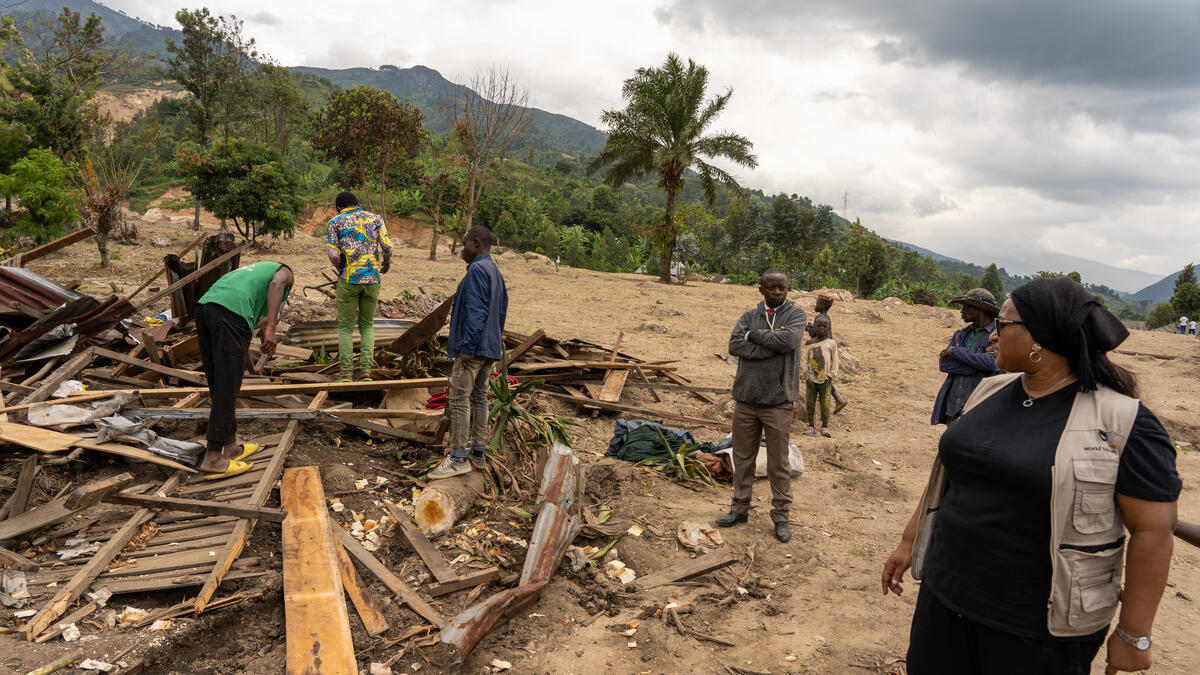
In the Democratic Republic of Congo, a group pulls apart a flattened home to use for firewood. People here live with extreme poverty, armed conflict and climate change. Deforestation (cutting trees for firewood) caused huge boulders to roll down the hill, wiping out homes and gardens. Photo: Geoffrey Denye
When it comes to disaster relief, World Vision Canada prioritizes these ‘fragile contexts,’ where multiple crises have already placed children in harm’s way. When we appeal to the Canadian public to donate for disaster relief, it’s usually because the country’s own government isn’t meeting needs.
2. Is an emergency less critical than a disaster?
An emergency is no less critical than a disaster when it comes to saving lives and rebuilding futures. World Vision is present in nearly 100 countries and arrives quickly to assist children and families. This kind of care can help prevent emergencies from growing in scope and scale.
Quickly providing safe drinking water can help prevent outbreaks such as cholera. Distributing emergency food packages can stave off dangerous malnutrition, especially in children.
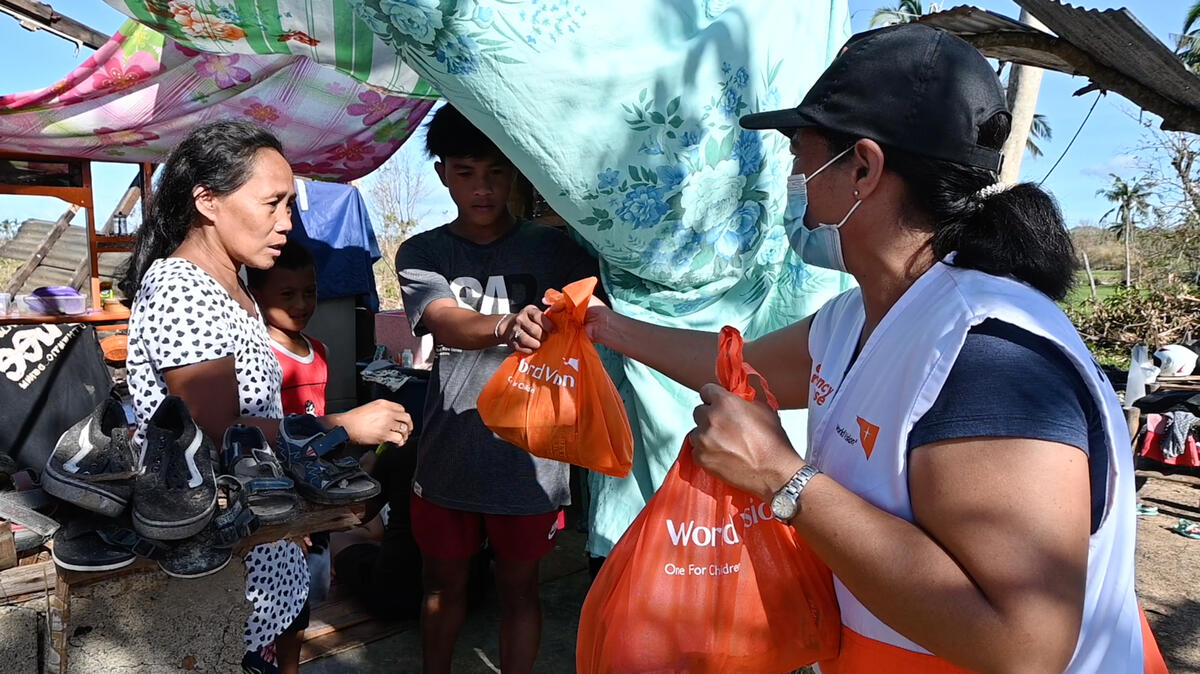
For children and pregnant women in particular, extreme malnutrition can cause lasting damage and even death. When Typhoon Rai hit communities in the Philippines in 2021, humanitarian agencies provided many kinds of disaster relief—including food. Photo: Dexter Gamboa
When a storm or earthquake is minor, the fallout can often be addressed by a country’s government, its local relief agencies and social safety networks. But when a humanitarian crisis affects hundreds or thousands of people, global support can be necessary.
That’s when disaster relief is critical to save the lives of children and their families. After Super Typhoon Rai hit the Philippines in December 2021, for example, humanitarian agencies appealed to Canada’s government for help. Since the need was widespread and urgent, Canada provided support for disaster relief in the Philippines.
Complex humanitarian emergencies
The United Nations defines a complex humanitarian emergency as “a crisis involving multiple causes” where “a breakdown in authority or adequate capacity often prevents adequate response from government …” Within the charity sector, the term is often used interchangeably with ‘complex disaster’.
In simple terms: many things are happening at once, as in Syria, Somalia, Afghanistan or Yemen. Families in these nations have lived through years—if not generations—of simultaneous threats such as:
- Armed combat
- Economic and political turmoil
- Food crisis
- Human-caused destruction and change
- Natural disasters
As the UN notes: in a complex humanitarian emergency, the country’s leaders don’t or can’t intervene to meet their people’s most basic survival needs. That’s where disaster aid from around the world comes in, making a difference for millions of people in danger.
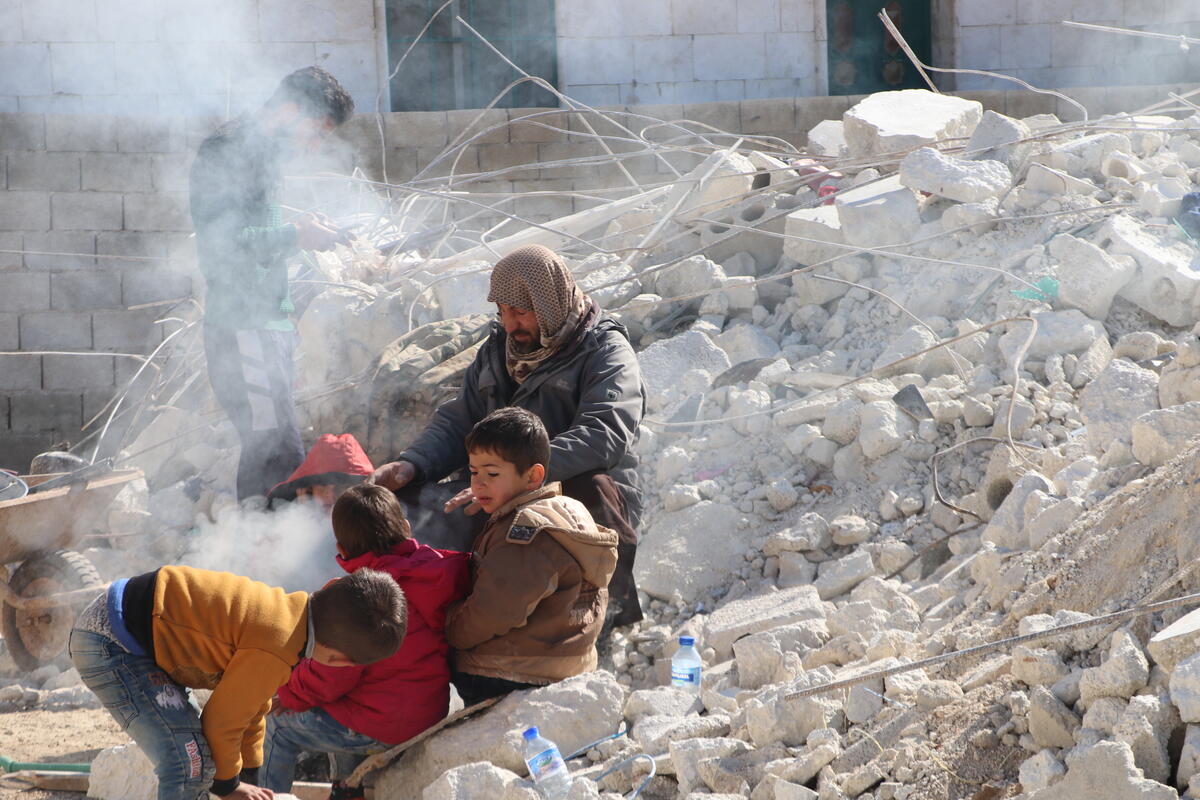
Even before a massive earthquake rocked Syria in February 2023, the country had been facing a complex humanitarian disaster for years. World Vision provides disaster relief to families in Syria, as well as Syrian refugees in neighbouring Lebanon. Photo: World Vision
The earthquake that devastated parts of Türkiye and Syria in February 2023 triggered the need for global disaster relief. On its own, such an earthquake would have caused widespread suffering. But even before this natural disaster happened, Syrians were living through a complex humanitarian emergency involving:
- An ongoing hunger crisis.
- Armed conflict since 2011.
- Economic and political turmoil.
- Destruction and degradation of infrastructure.
- A tearing of social safety nets providing health-care and child protection.
Prior to the earthquake, world bodies, governments and humanitarian agencies like World Vision were already providing disaster relief in Syria. But this colossal natural disaster triggered the need for immediate, life-saving support. In the first weeks of World Vision’s response in February, we provided:
- 11,463 people with meals.
- More than 2,000 households with cash assistance.
- 1,447 households with blankets and other relief items (including heaters for tents as the temperature plunged).
‘Polycrisis’
In 2022 and 2023, people in Canada and elsewhere started hearing the term ‘polycrisis’ to describe our overall global situation. It describes the interplay among the global threats that affect all of us in some way, says the World Economic Forum. Some of these are/have been:
- The COVID-19 pandemic.
- The war in Ukraine, which has prompted a global surge in food and energy costs.
- The cost-of-living crises.
- Climate crisis affecting weather patterns in new and frightening ways.
True, these threats intensify disasters in places like Iraq, South Sudan or the Democratic Republic of Congo, where people were already struggling to survive. But ‘polycrisis’ refers to the overall global experience which includes wealthy, stable countries like Canada. People can feel confused, anxious, and overwhelmed with new financial struggles.
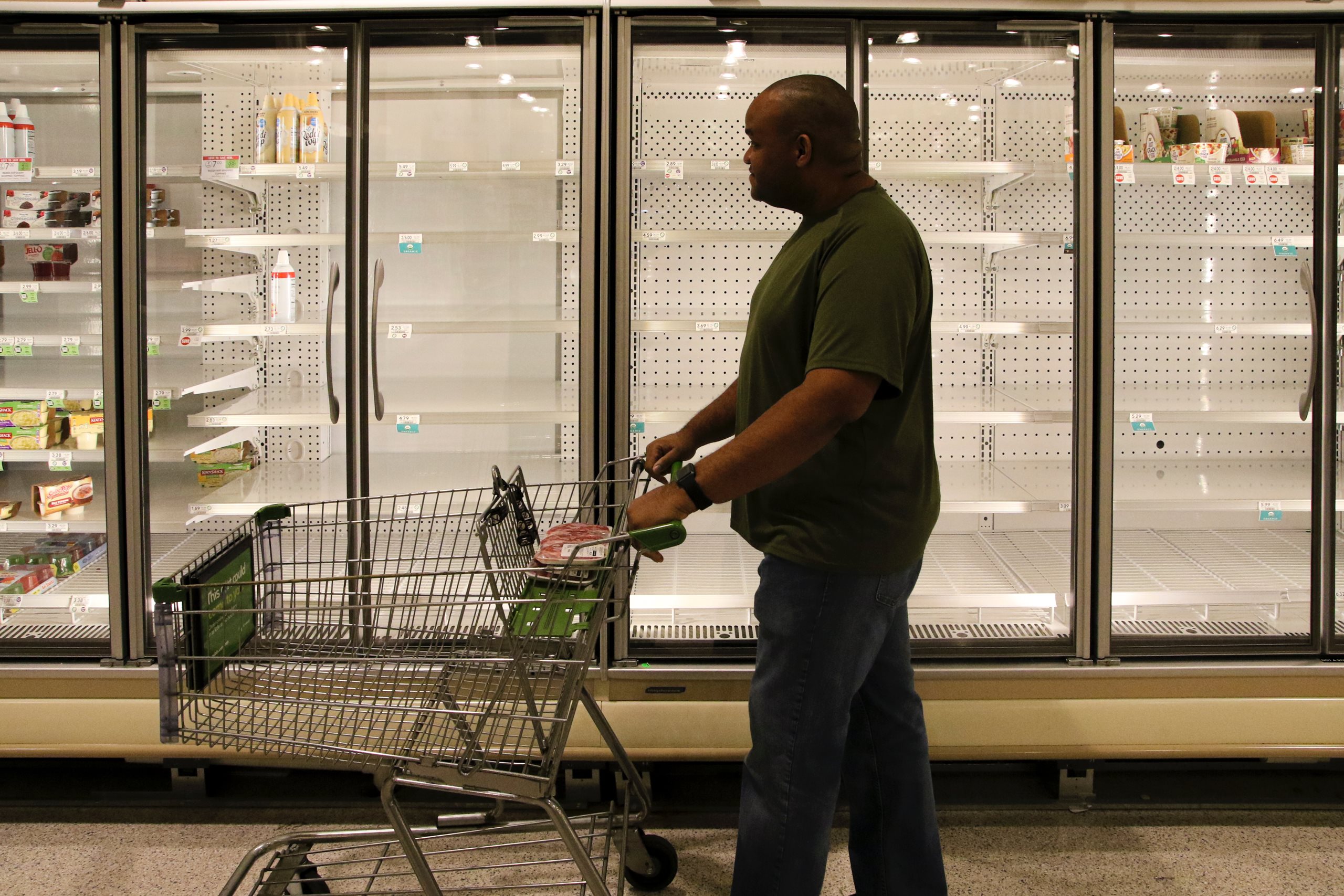
The COVID-19 pandemic, war in Ukraine and the global climate and sharp cost-of-living increases have directly affected people across North America, leaving many with the sense that they’re living through a global crisis. Photo: Mike Haupt
Polycrises can rob many people of their ability to support disaster relief overseas through donations for emergency and disaster relief. This is happening just as donations from countries such as Canada are so desperately needed around the world.
3. In an emergency or disaster, who needs relief most urgently?
Children are at greatest risk in any emergency or disaster suffering first and suffering most. Even in Canada, children are more vulnerable than adults. Their vulnerability increases in an emergency or disaster context. Here are some examples:
- Separation from families can leave children vulnerable to great need and serious risk of exploitation and abuse. Child trafficking and early marriage are two such threats, along with forced service in armed militia.
- Hazards such as floodwaters, unstable buildings, shifting rubble or unexploded landmines can make a community deadly. In some contexts, simply moving around the neighbourhood is dangerous. There may be no safe place to move and play.
- Malnutrition harms children’s developing minds and bodies, causing suffering more drastic and permanent than with adults.
- A lack of clean, safe water during emergencies and disasters can cause waterborne illness such as diarrhea, dysentery and cholera. As can floodwaters. Adults can also contract these, but their immune systems are better developed to fight disease.
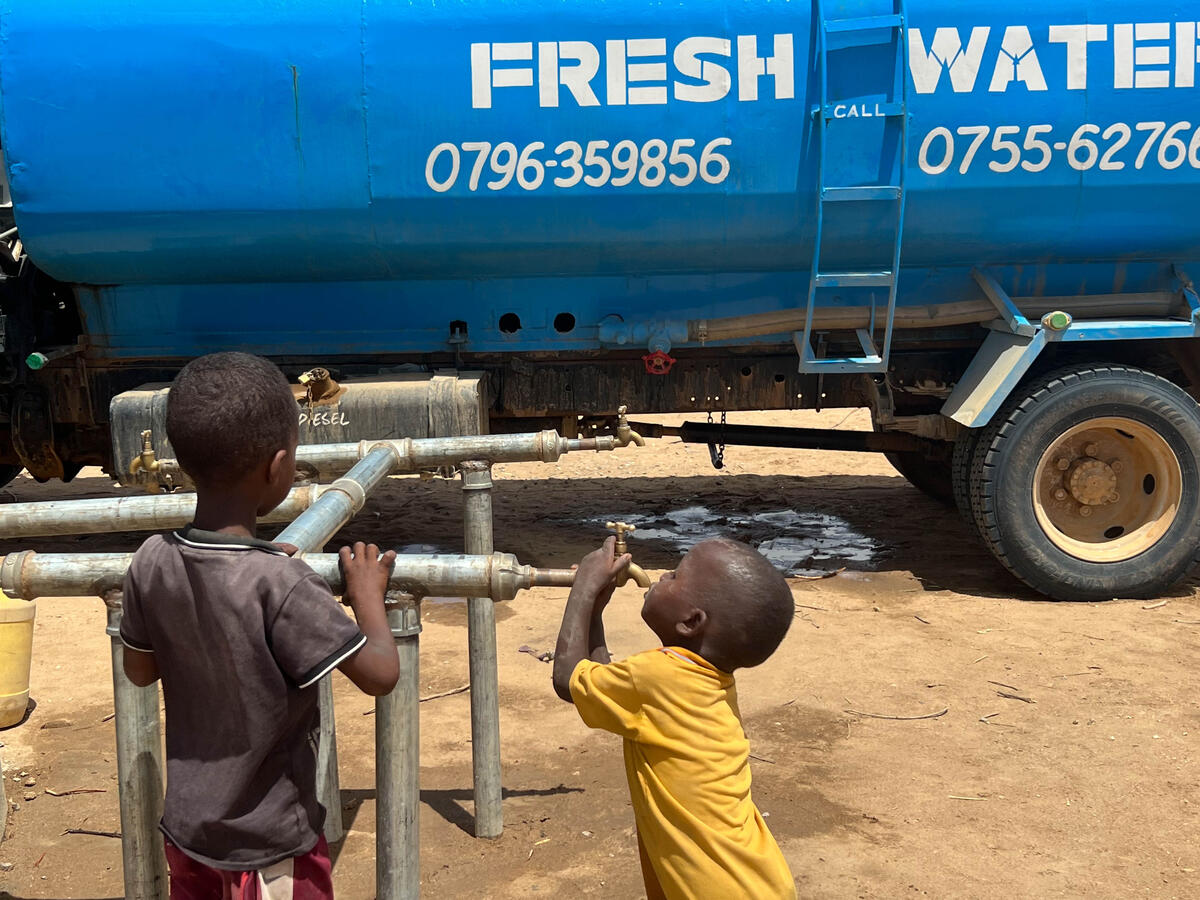
The COVID-19 pandemic, war in Ukraine and the global climate and sharp cost-of-living increases have directly affected people across North America, leaving many with the sense that they’re living through a global crisis. Photo: Mike Haupt
4. What kinds of emergency and disaster relief does World Vision provide?
Since the 1950s, World Vision has reached children and communities in both emergencies and disasters. We provide girls, boys and their families with access to nutritious food, safe water, disease prevention, child protection activities and health support and education.
Here are a few examples of emergency and disaster relief from 2022, from World Vision Canada’s Annual Results Report. With the help of donors in Canada:
- 67,690 metric tons of food were distributed to meet families' immediate survival needs.
- 2,160,003 ready-to-use therapeutic food packets were distributed, providing a source of emergency nutrition for malnourished children.
- 177,547 people received emergency water, sanitation and hygiene kits to help hydrate, prevent waterborne illness and stave off infections.
- 7,520 emergency kits, as well as shelter supplies and basic resources, were distributed in times of need.
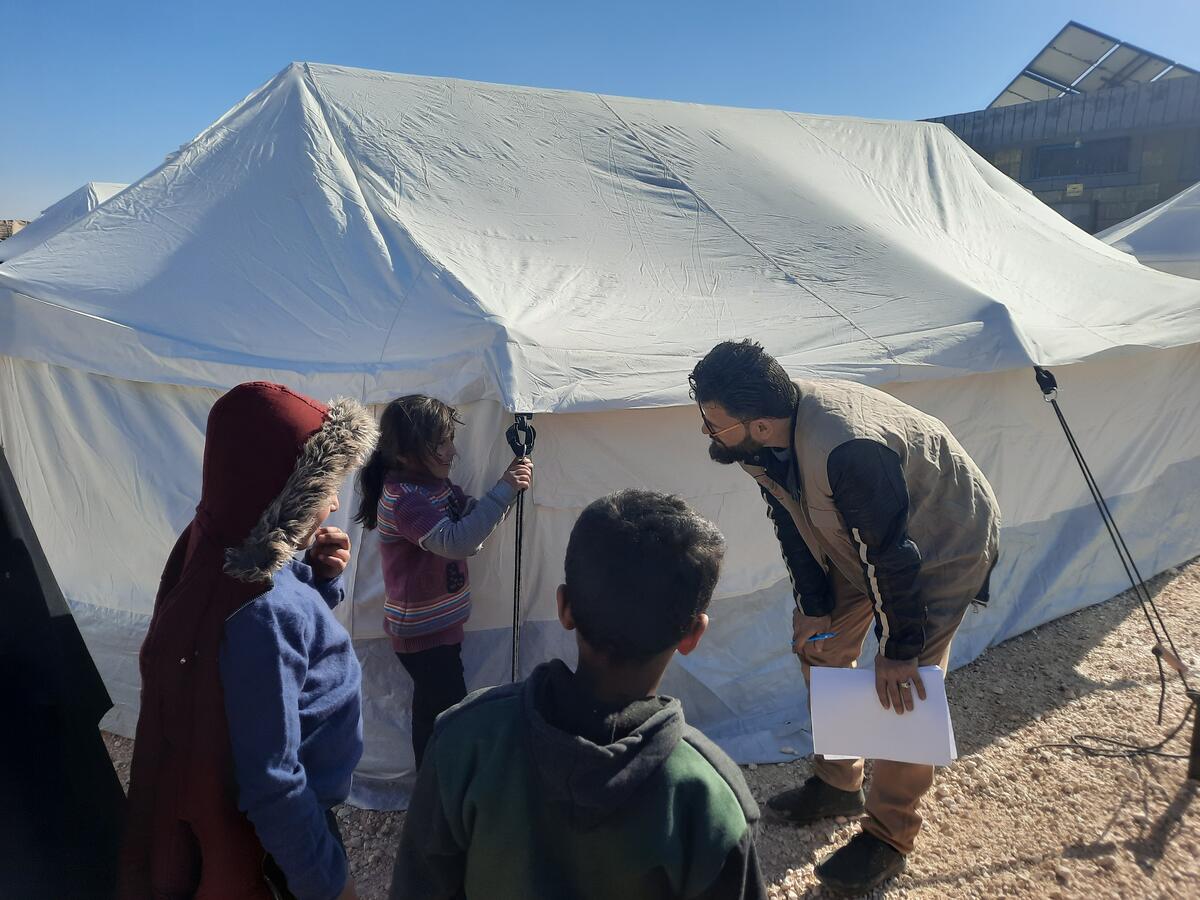
Following the February 2023 earthquake in Syria, temperatures dropped to -2 degrees Celsius. In disasters, children who have lost their homes are extremely vulnerable to illness from exposure. World Vision helped provide shelter and heaters to families living outdoors. Photo: Rand Ishaqat
For disaster relief, World Vision Canada prioritizes regions where children are already in harm’s way due to a spectrum of threats. These girls and boys are vulnerable to malnutrition, dehydration and illness. But many also face abuse, neglect and violence.
These are regions in places like Afghanistan, the Central African Republic, the Democratic Republic of Congo, Mali, Niger, Somalia, South Sudan, Sudan, Syria, Turkey and Ukraine.
Cash assistance for families
This is something World Vision does during disasters and hunger crisis situations. Together with the World Food Programme, we help provide food and cash assistance to families. This is a critical, life-saving part of our response.
Receiving temporary provisions for food, cash and credit helps give families a safety net so they don’t slip further into extreme poverty. It also returns to families the ability to make a few of their own decisions, to buy what their children most need.
Disaster risk reduction
Natural hazards like earthquakes and tsunamis are becoming increasingly catastrophic as time goes by. Causes include climate change, urbanization, as well as countries’ and communities’ inability to prepare for disasters.
World Vision helps communities in hazard-prone regions to develop early warning systems and action plans for times of crisis. This means helping equip authorities with knowledge, skills and resources for effective disaster management.
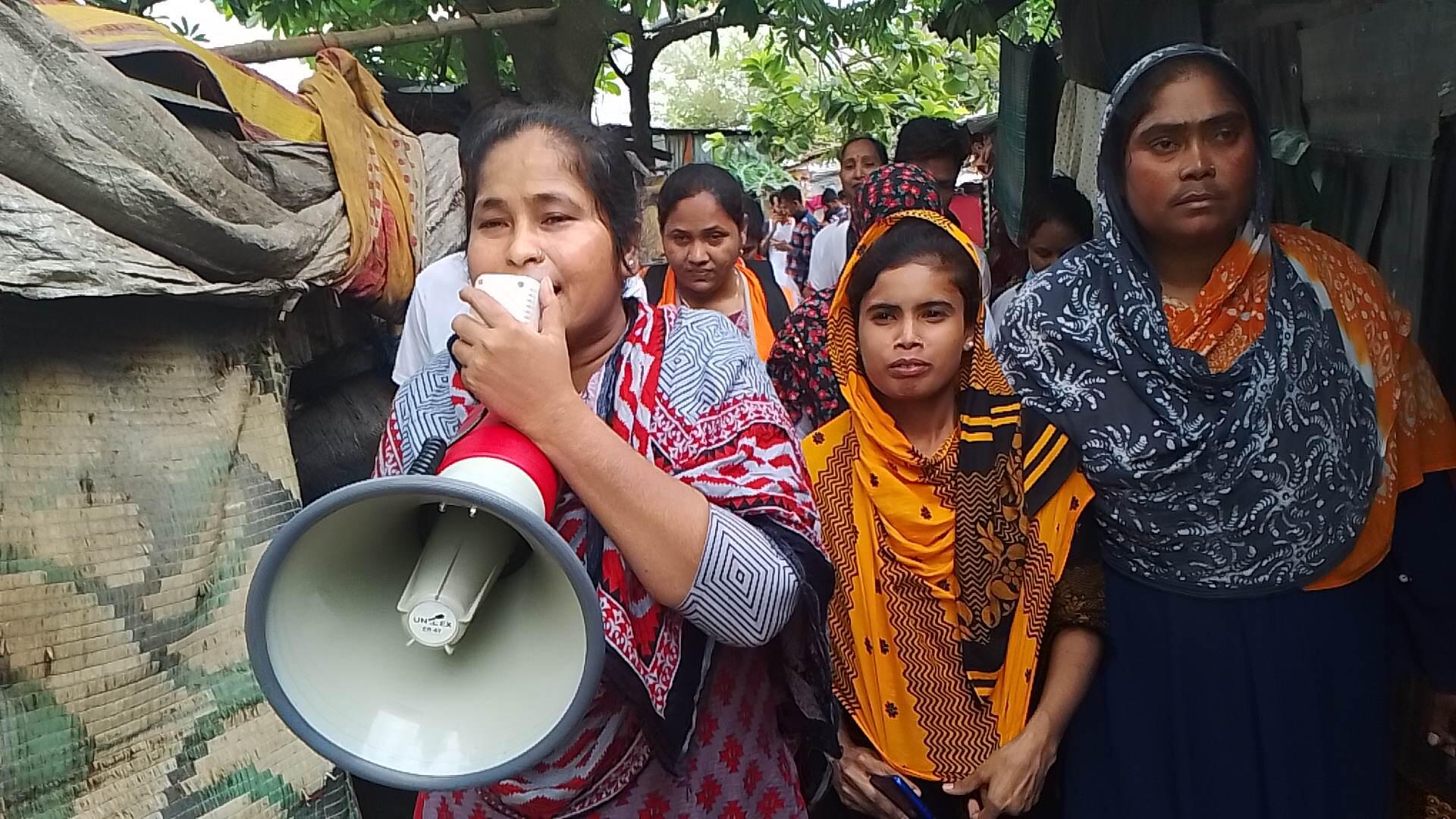
Megaphone messaging can save lives in the critical hours before a cyclone hits. Here, a local safety committee in Bangladesh, along with World Vision staff members, urges people to get to community cyclone shelters. They are sturdier than most homes, built to stand firm against the coming onslaught. Photo: World Vision Bangladesh
5. How does Canada provide disaster relief?
In many ways, including government funds for disaster support around the world, as well as through agencies like World Vision. These international relief and development agencies rely in turn on:
- Donations from people like you.
- Government grants.
- Partnerships with world bodies like the World Food Programme and the United Nations.
- Partnerships with other international and local relief and development agencies, like those we partner with through the Humanitarian Coalition here in Canada.
- Governments and communities of countries affected by the crisis.
Canada’s government
Global Affairs Canada provides grants to aid agencies like World Vision Canada who are responding to both complex humanitarian situations and sudden onset emergencies. This page shows the type of grants provided to assist with smaller-scale disasters.
In one example, World Vision Canada received a $350,000 grant to help people affected by floods in the Democratic Republic of Congo. To qualify, we submitted a proposal with an overview of the situation and a plan of action including:
- The number of people we were planning to assist (15,000).
- The type of assistance would be providing (emergency water and sanitation).
- The length of time in which we plan to do our work (four months).
- The benefit of doing the work (keeping children and families safer from waterborne illness, among other threats).
The Humanitarian Coalition
The Humanitarian Coalition is comprised of 12 leading aid organizations (including World Vision) joining together to respond to international humanitarian disasters. The Coalition provides people across Canada with a simple, effective way to donate.
Member agencies join forces to:
- Raise funds.
- Partner with the Canadian government.
- Mobilize media, businesses and individual Canadians in response to disasters.
- Reduce costs (by collaborating) so donor dollars go where most needed to create the greatest impact.
In 2022, the Coalition responded to 27 disasters (including fragile contexts) in 29 countries, reaching more than 4.8 million people. In 2023 (by August) World Vision had partnered with the Humanitarian Coalition on the Türkiye-Syria earthquake response and the global hunger crisis.
6. How can I help provide emergency and disaster relief?
Thank you for asking. World Vision Canada has an Emergency and Disaster Relief fund which helps us support communities in crisis around the world. Donate with the assurance that your gift will help save lives in the world’s most dangerous places.